1967 Chevron started building cars with 1 litre / 61. cui “Screamer” motors to comply with the tertiary international Formula 3 regulations.
The manufacturers first Formula 3 model was the one off B7 driven by Peter Gethin towards the end of 1967, this was followed by a batch of 8 production versions of the B7 built in 1968 known as B9’s
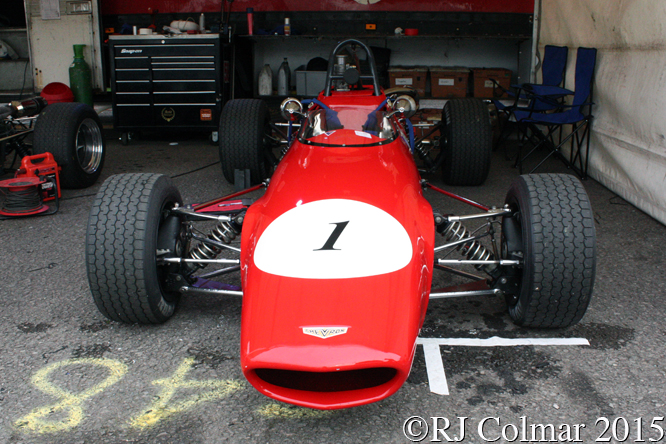
A one off B9B with stressed panels incorporated into the frame was built at the end of 1968 and again raced by Peter Gethin who drove the car to a debut win.
The following year Chevron built 14 production versions of the B9B known as the B15 and in 1970 9 upgraded Formula 3 cars followed known as B17’s.
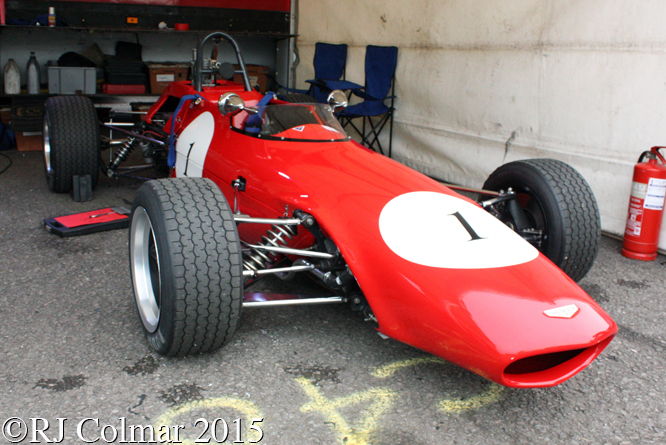
I believe today’s featured car seen in these photographs at the recent Grand Finals Castle Combe meeting where it was driven by Jim Blockley is the same car as that advertised by David Pullen in October 2013.
Distinguishing features include the one piece top body work from the back of the cockpit to the nose, the exhaust, and the universal joint with sliding spline driveshafts in place of the more common for the period Rotoflex driveshaft couplings.
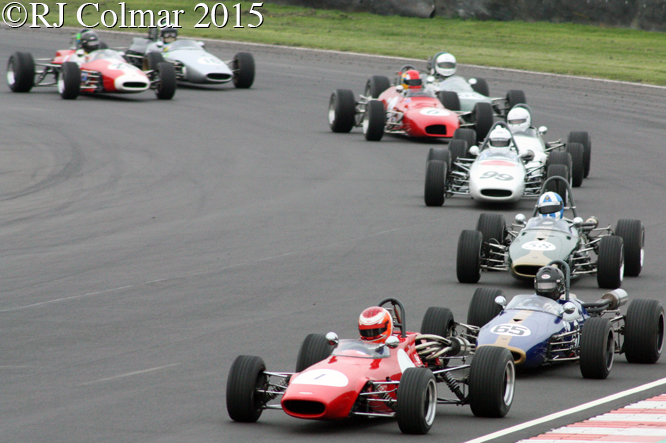
According to former Derek Bennett Engineering employee Kevin ‘Ossy’ Hodge, who was involved in building nearly all the B17’s, the car formerly belonging to David Pullen is the eighth Formula 3 B17 to be built and was originally supplied to Ken Sedgley.
Kevin also established recently that unlike Chevron’s GT’s chassis frames for the B8, B16 and later B19 models which were built by sub contractor Arch Motors the frames for the open wheelers were subcontracted out to Racing Frames in Ware, Hertfordshire.
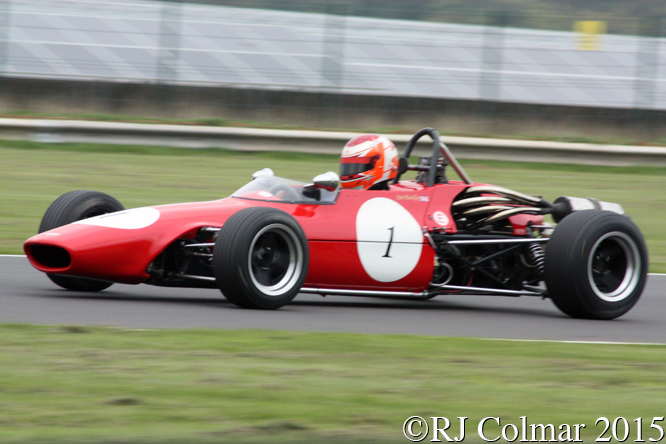
In his notes on Ken Sedgley’s B17, see note 13 on this link, Allen Brown records that #F3.70.08 was raced by Ken in Formula 3 and Libre events with Holbay motors and upgraded the following year with a 1600 cc / 97 cui Holbay motor compliant with the new for 1971 spec Formula 3.
John Finch of Chesterfield bought and raced the car midway through 1971 and shared it with Graham Lynch in 1972, the following year a Formula Atlantic Spec production based twin cam was fitted and the car was raced in both Formula Atlantic and Formula Libre events.
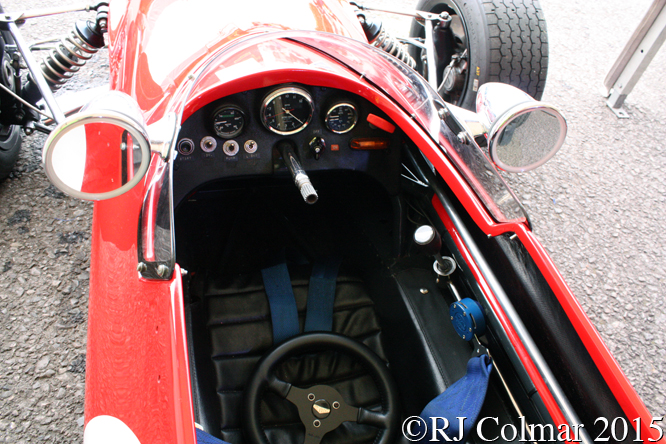
Alan Thompson bought the car for hillclimbing campaigning it in 1975 and 1976 which culminated in him securing the 1976 Scottish Hillclimb Championship.
Russell Paterson acquired the car in 1977 but crashed it before it passed through the hands of Bobby Howlings and M Wakefield-Brand in 1978.
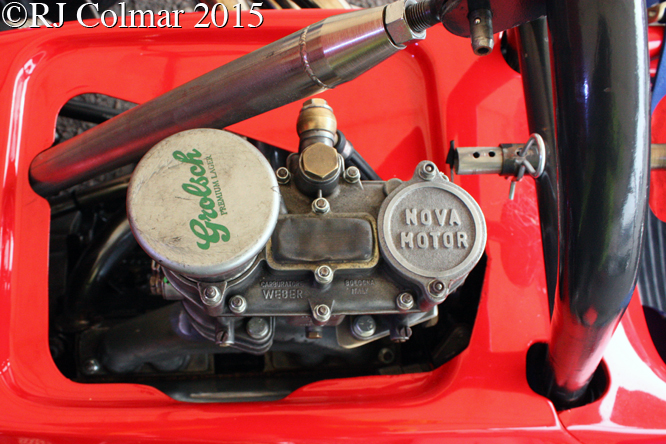
David Pullen bought the car in 1991 and in the spring of 2009 the car was significantly rebuilt with a 1964 to 1970 F3 spec 1 litre / 61 cui Holbay R70 MAE engine rebuilt by Stuart Rolt and Mk8 Hewland 4 speed gearbox by Cavan Riley.
John Pearson raced this car in 2014 prior to selling it to Jim Blockley who raced a Brabham in Historic Formula 3 events up until appearing in the Chevron at Castle Combe.
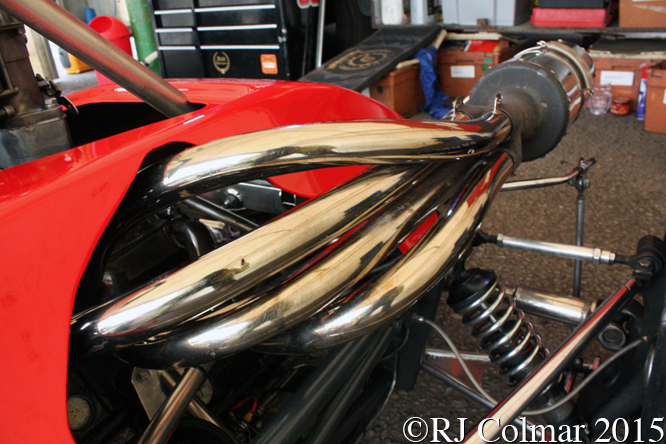
The 1964 to 1970 Formula 3 engine specs required the use of a production engine block and a single choke carburetor fitted with a 36mm restrictor twixt the carburetor and inlet manifold.
The cylinder heads were free to be modified with gear driven cams replacing cam chains and dry sump lubrication for the crankshaft, the 1 litre / 61 cui Formula 3 motor’s were known as “screamers” because they could occasionally be buzzed up to 13,000 rpm with little or no damage.
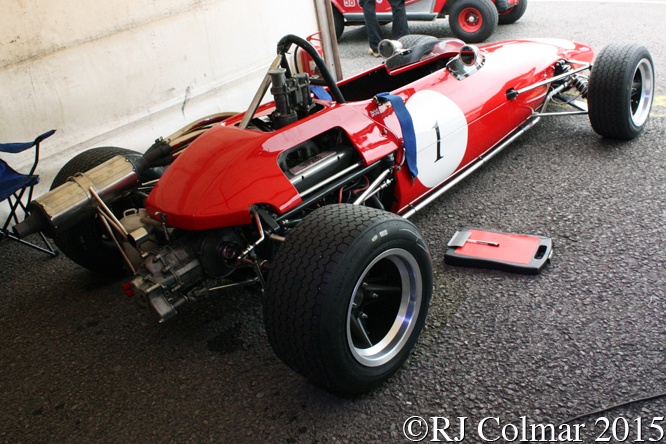
By far the most popular blocks used in the “Screamer” formula were the three crank bearing 105E and 109E blocks from Ford, Cosworth built a Modified Anglia Engine known as the “MAE” based on 105E but the term “MAE” appears to have carried over onto products for the same market from both Holbay and Novamotor who also used Ford 3 bearing engine blocks.
It was soon realised that the least resistance to flow was offered by a twin choke Weber IDA down draught carburetor with a blanked off choke, for which special inlet manifolds were built to fit engines that were tilted over at 30 degrees along the crankshaft axis in the chassis.
My thanks to all who contributed to the B17 thread at TenTenths and to the Ford 105E thread at The Nostalgia Forum especially Snakedriver, Ray Bell, John Saunders and David Birchall who kindly answered my question regarding the use of the blanked off twin choke carburetors.
Thanks for joining me on this “Scottish Hillclimb Champion” edition of “Gettin’ a li’l psycho on tyres” I hope you will join me again tomorrow. Don’t forget to come back now !

